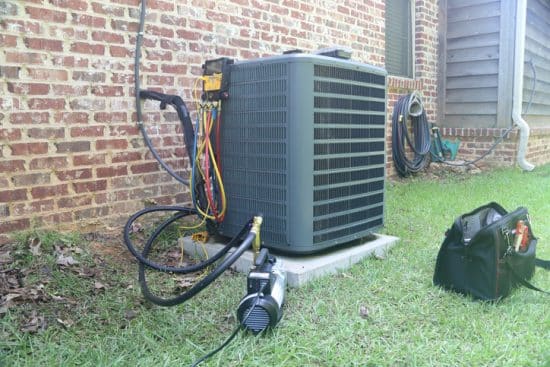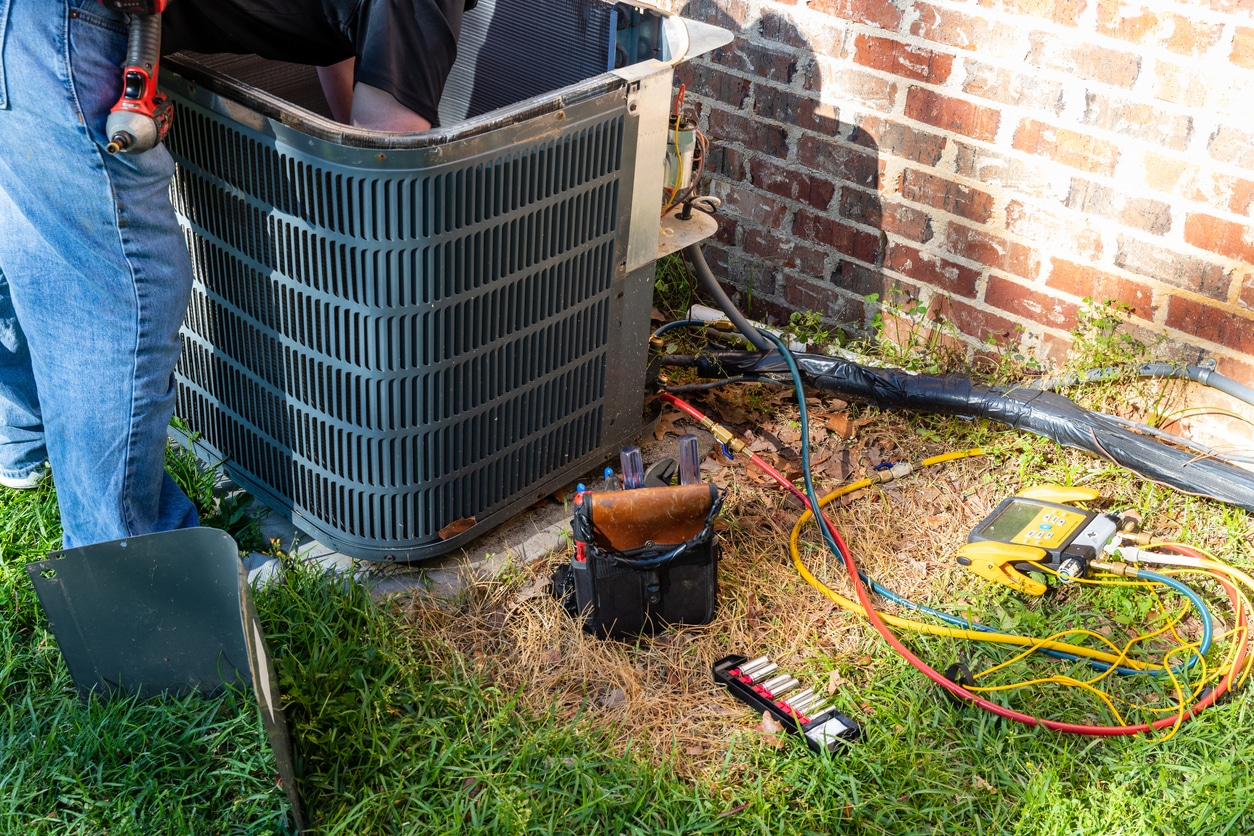The r22 phase out
R-22—otherwise known as Freon—a commonly used HCFC refrigerant gas, is being phased out by the US Environmental Protection Agency at the end of this year. Due to their negative impact on the environment, HCFC (hydrochlorofluorocarbon) gases are being limited internationally, with production and import of R-22 in the US prohibited after January 1st, 2020, in preparation for a full HCFC ban by 2030. However, since so many air-conditioning and refrigeration units and systems still utilize R-22 to provide cooling, equipment owners will need to prepare for the production and supply drop-off, and the impact this will have on future maintenance. While it may still feel like a ways off, preparation is key, so consider building a plan around one of these options to make sure you’re fully prepared for the R-22 phaseout.
What is R-22?
Freon is more than a name for the liquid or gas cooling substance. In fact, it’s a trademarked brand name for a range of chemical solutions known as refrigerants. Freon refrigerants come in a variety of types, encompassing both residential and commercial cooling uses, and are comprised of chemicals that are either hydrofluorocarbons (HFCs) or hydrochlorofluorocarbons (HCFCs). Each Freon refrigerant is distinguished by a unique “R” code, as evidenced in the most prominent Freon refrigerant, R-22. The numbers at the end of the “R” code correlate to the atoms within the chemical compounds, which, with the correct equation, will tell the exact amount of fluorine, hydrogen, carbon, and chlorine atoms.
R-22, also known as Freon 22, is the most popular HCFC refrigerant variant due to its widespread use for reliable medium- to low-temperature commercial refrigeration and for residential air conditioning. However, while it is particularly effective at cooling, R-22 is also an atmospherically damaging greenhouse gas. Thus, to curb the widespread use of R-22 refrigerant from continuing to damage the ozone layer of the earth, a United Nations treaty was finalized in 1988 to call for the staggered phase-out of R-22. Known as the Montreal Protocol, it was the first UN treaty ratified by all 197 nations and has been steadily cutting down the use of R-22 here in the United States, with all-new manufacture of R-22 being eliminated at the beginning of this past year.
Cooling in a Post-R-22 World
Of course, with R-22 being phased out, many systems are adopting other Freon refrigerants to provide cooling. The majority of replacement Freon solutions are HFCs, as these are non-ozone depleting, and retain the non-flammable properties of R-22. New A/C systems are being built to run off of these HFC Freon solutions, whereas homeowners and business-owners with older A/C units are able to retrofit their systems to use the newer HFC solutions, such as as Freon™ NU-22B™ and Freon™ MO99™. By adopting these newer solutions, homeowners and business owners will be able to get ahead of the curve of rising R-22 prices, as the left-over supply begins to be used up for good.
Freon, and its proper routing through the unit, is just one part to keep in mind for a well-tuned, consistently running A/C. And while R-22 has been slated to be completely phased out by 2030, homeowners don’t need to panic about their cooling systems just yet. The supply of R-22 won’t run out overnight, and though prices for the solution will rise — and could affect future repair costs for older units — it’s just as important to have regular maintenance to ensure the rest of a unit is running properly.
How to Be Prepared for the R-22 Phaseout
Maintain Your Current Equipment
A common theme for all the options available to equipment owners is determining the health of the unit or system. If the system is in good condition, not too old, and free from any major maintenance issue (such as leaks), it’s entirely possible to keep the old system up and running without significant adjustments. This is likely the cheapest of the options available in the short-term, but it does carry the greatest risk. Call (815) 781-2567 or click to schedule your complete system inspection today.
Due to the gradual rollout of the R-22 phaseout, the supply and production of R-22 has been increasingly limited each year. This means any future maintenance or repairs for an older system will rely on stockpiled or recycled supplies of R-22, which means two things: increased cost, and increased time to repair. In the event of an emergency repair, these two issues are compounded and could result in a noticeable amount of time without necessary refrigeration or air conditioning.
If you’re confident in the health of your system, then consider this option, but don’t get caught sinking more money into an older system when a retrofit or a replacement could end up saving more overtime.
Retrofitting Your System
As the R-22 phaseout has been on the horizon for some time, it has given suppliers and manufacturers the chance to plan ahead by developing alternate refrigerant options, which can be compatible with older systems, and are still readily available. By retrofitting your current system to be compatible with one of these other refrigerants, it can provide a longer buffer period to prepare for the eventuality of a replacement, while easing the transition. Additionally, once retrofitted, the overhead costs to repair the system will be cheaper, rather than relying on the scarcity of R-22.

Notably, however, retrofitting is not a universally applicable solution. Some systems and units are unable to be retrofitted. Systems that can will not always perform at the same level of efficiency as they did before, either, losing some capacity, and creating larger energy costs through increased usage. The final risk to consider when weighing the option to retrofit is the potential to void the warranty on the equipment, as many manufacturers state within their warranties that they will not support the use of alternative refrigerants in systems designed to use R-22.
Replace for the Future
The final option is to simply bite the bullet, and replace all older HVAC or refrigeration systems and units outright, with newer systems that no longer rely on R-22. This option is the most expensive option up front, and the cost is always a realistic factor to consider, but it also an inevitable necessity. Incidentally, committing to a full replacement is not just the best safeguard, but depending on the state of your current system, it could end up saving significantly in the long-run.
The obvious cost-saver is that a new system will eliminate the wait time or sunk cost of an emergency repair reliant on R-22 supplies. This also means that any repairs or maintenance that do come up will likely be completed in less time, and leave you without the hassle of living without the necessary cooling systems for your home or business. On top of repair considerations, newer systems are overall more efficient, and thus, less expensive to operate, on top of the fact that a new replacement will last you longer than the current system or unit that is installed. While a replacement may feel like a hard cost to commit to, the overall investment can be a boon compared to the headache of an emergency breakdown.
Reach out to Duane Blanton for Retroffiting & Maintenance
For homeowners or business-owners interested in retrofitting their existing equipment, interested in installing a new system, or just interested in scheduling annual maintenance, reach out to the licensed professionals at Duane Blanton Family Home Services. The knowledge experts at Duane Blanton bring with them over 30 years of experience to answer any question that may come up, and to help repair any potential issue. Give the technicians at Duane Blanton Family Home Services a call today, at (815) 781-2567, or reach out via their convenient online scheduling portal.


